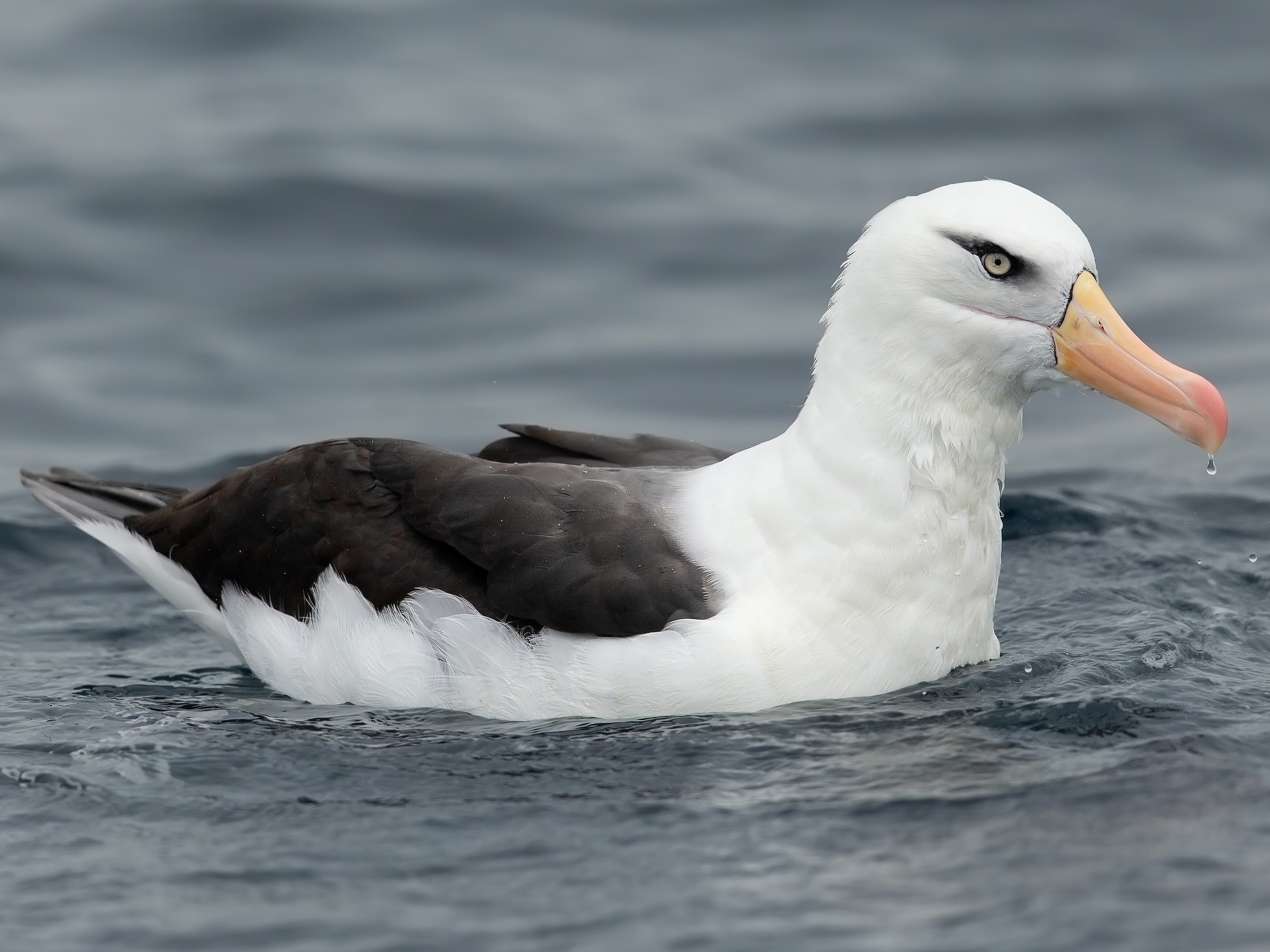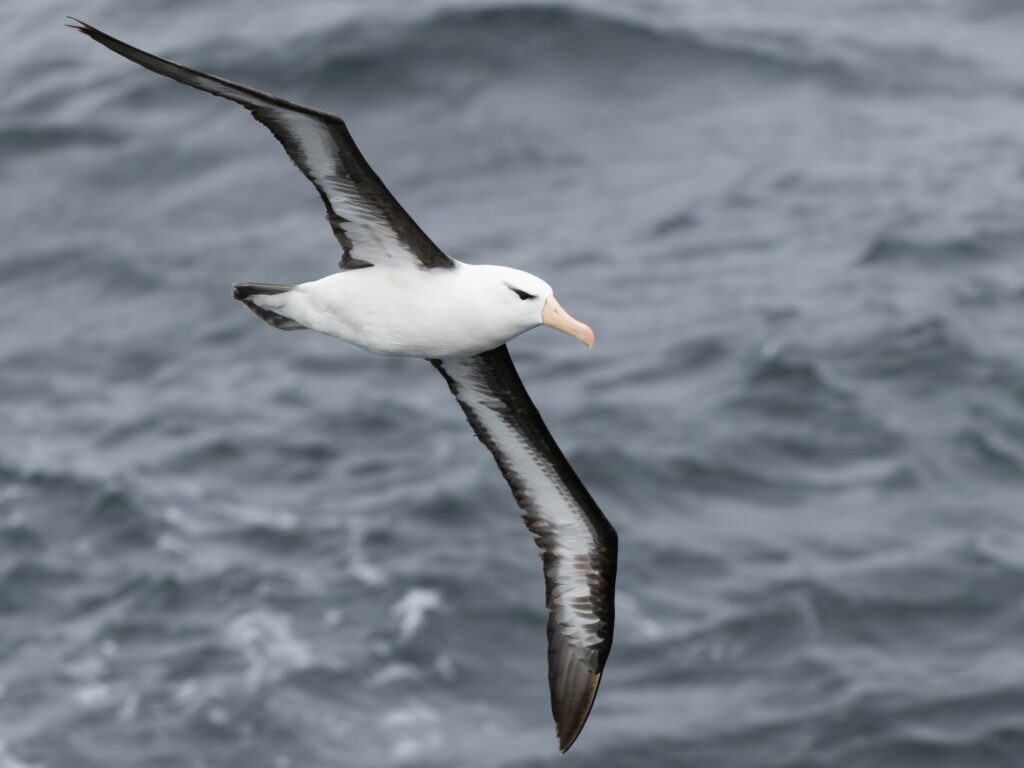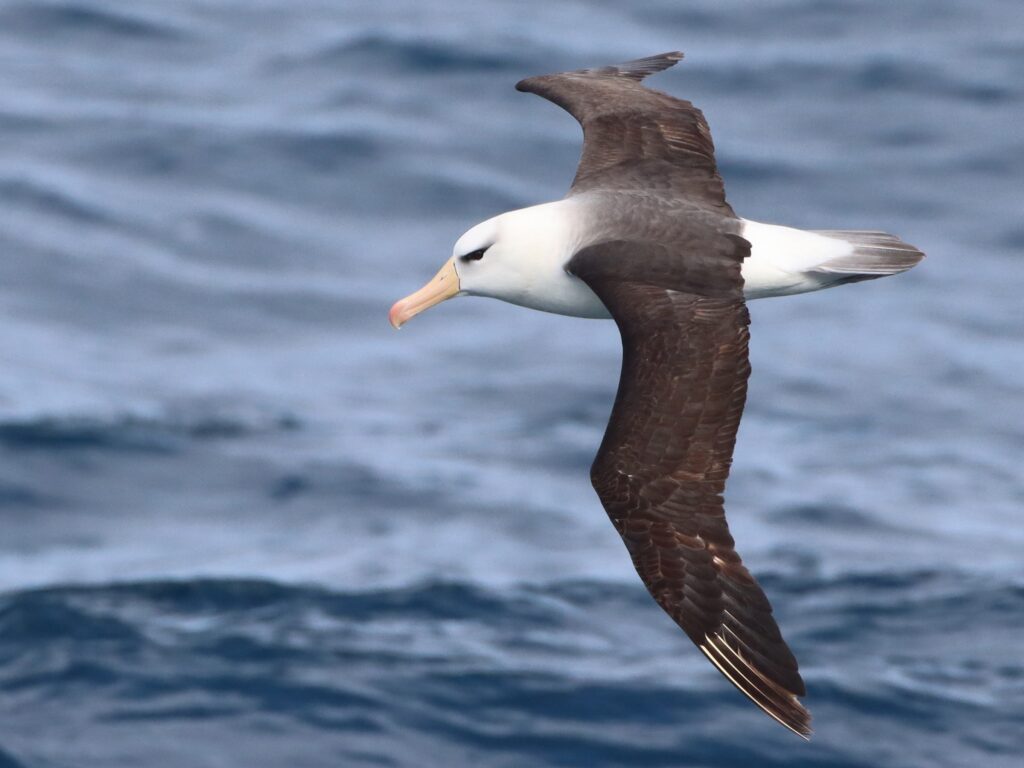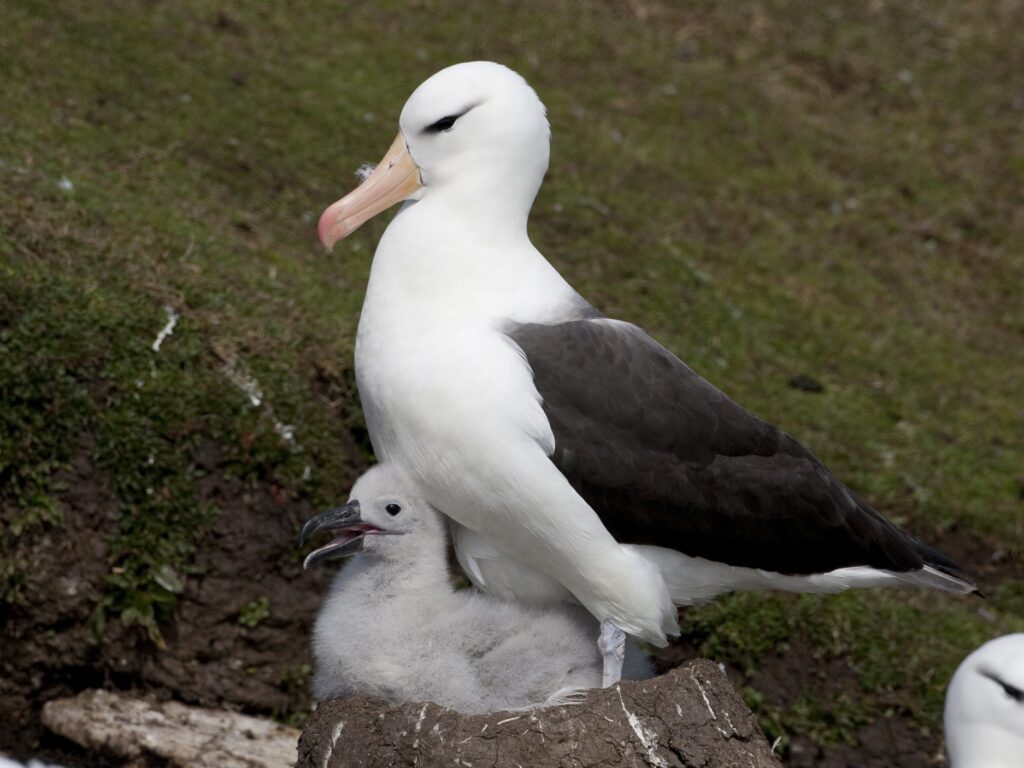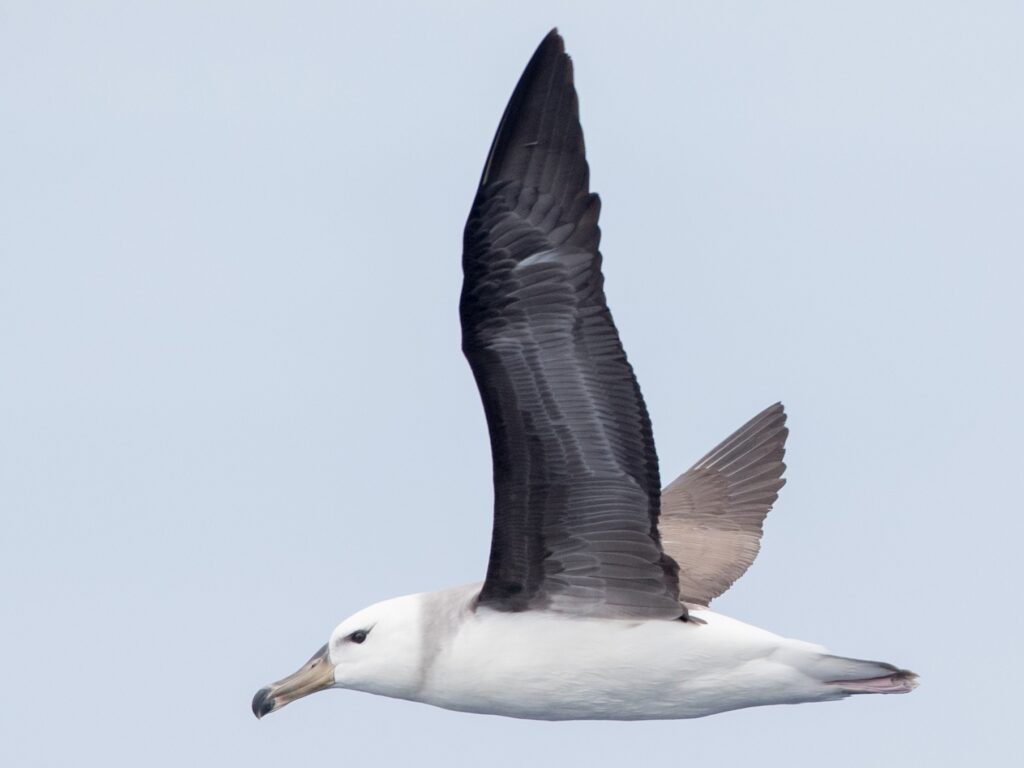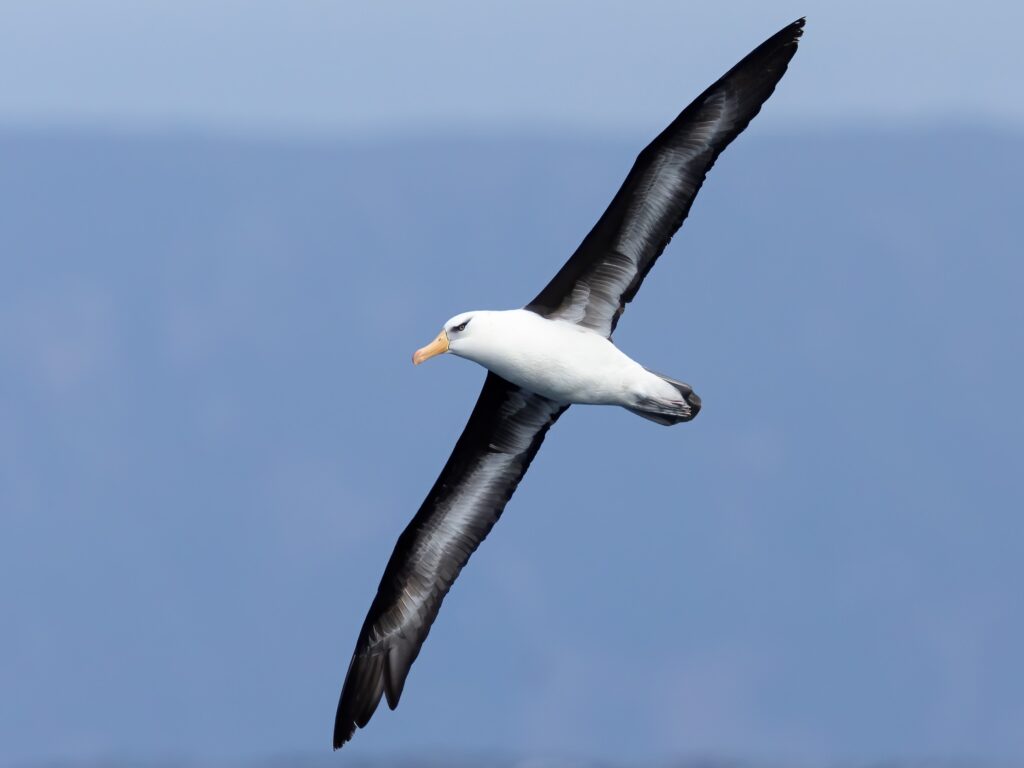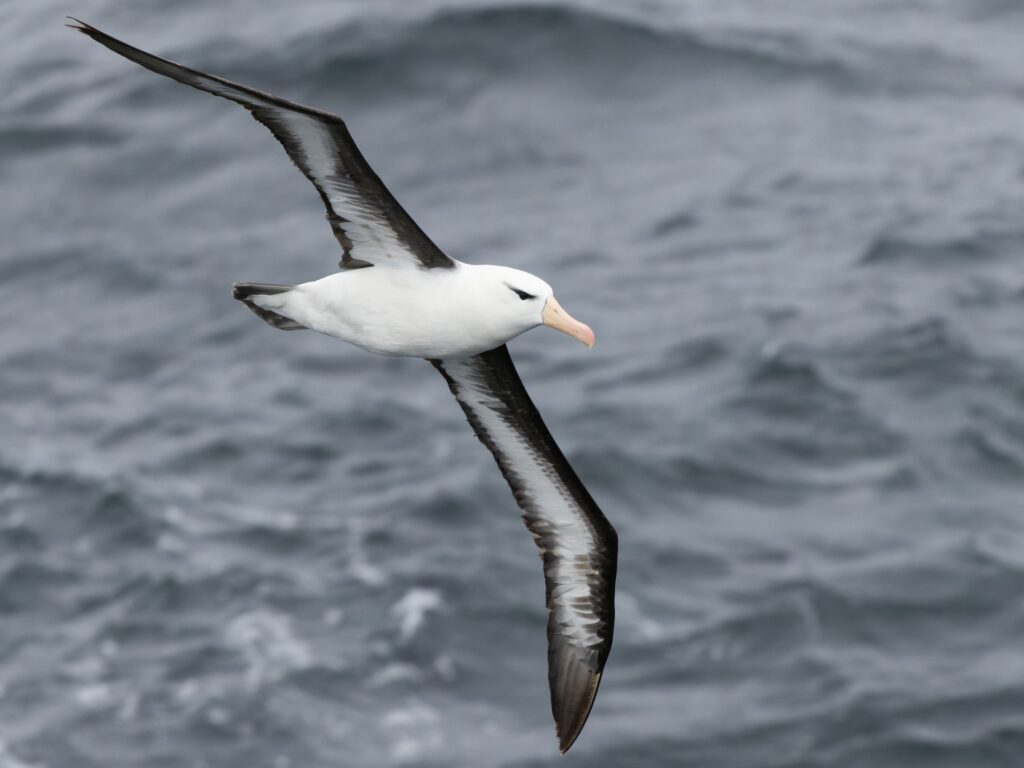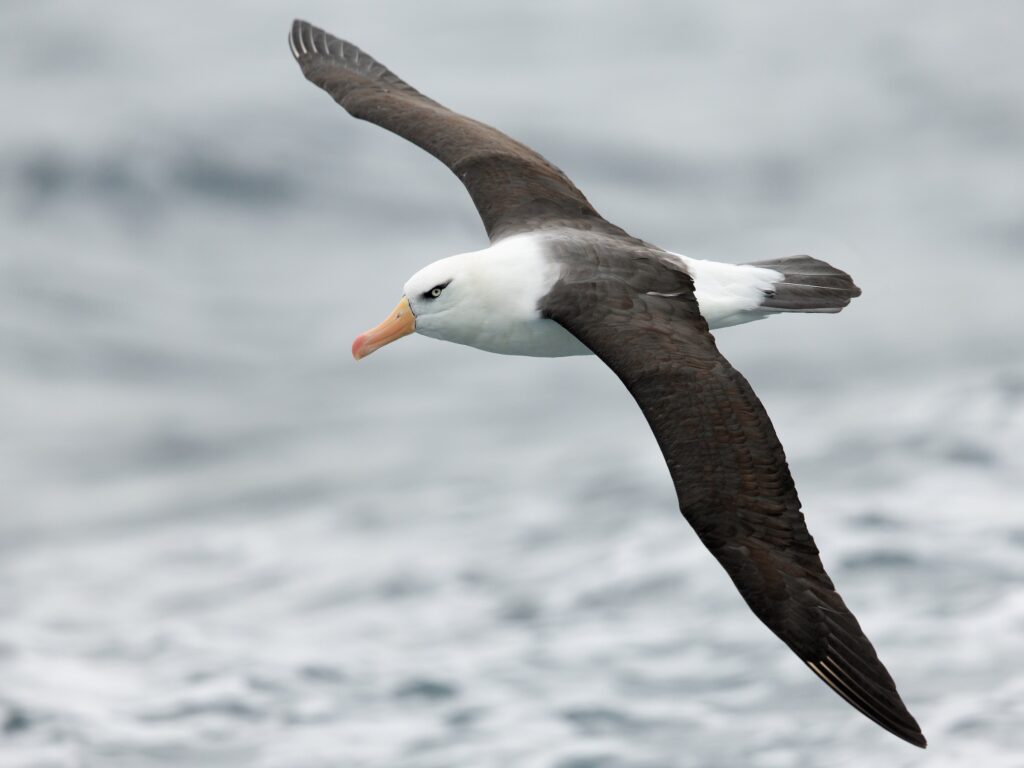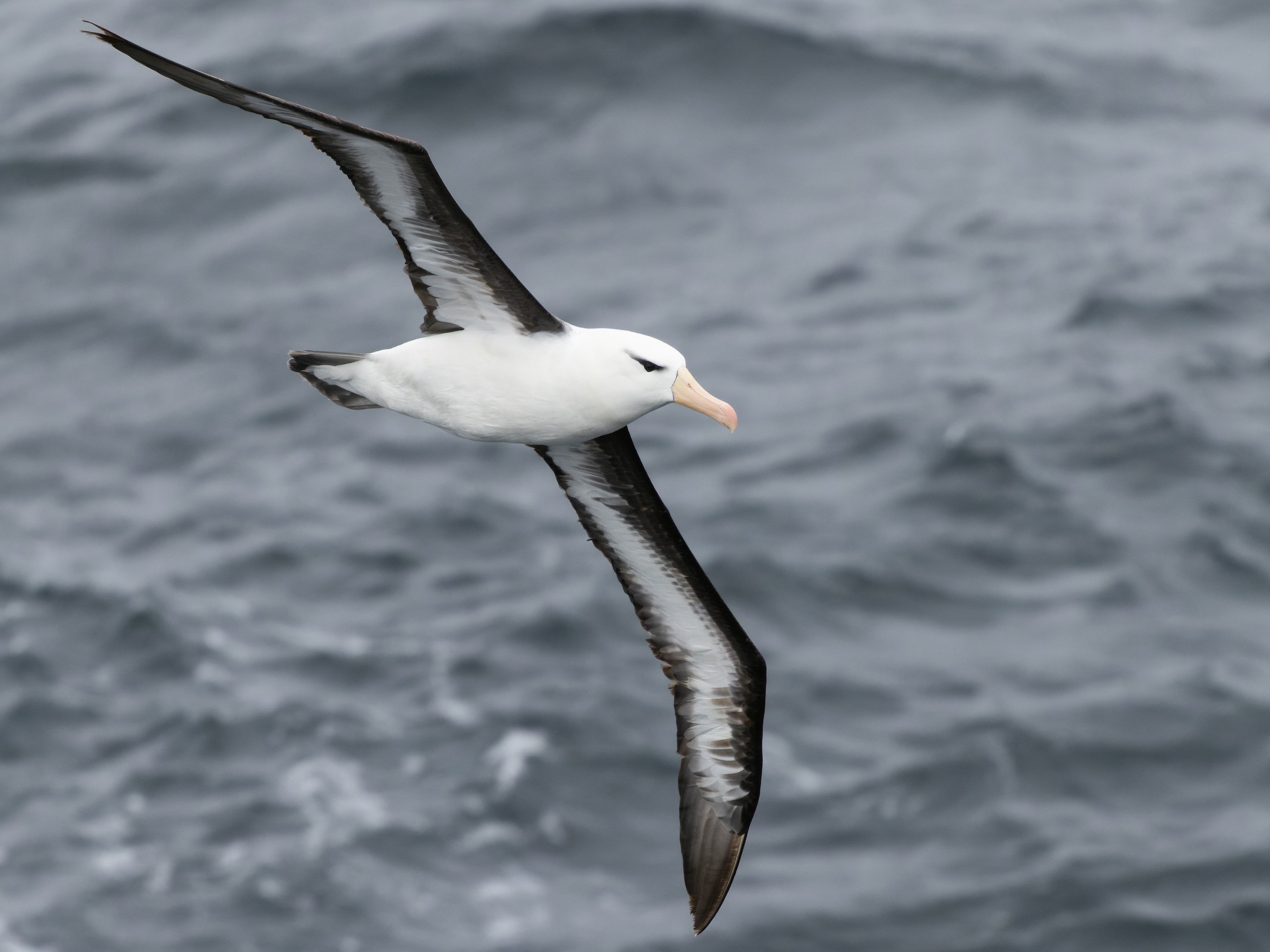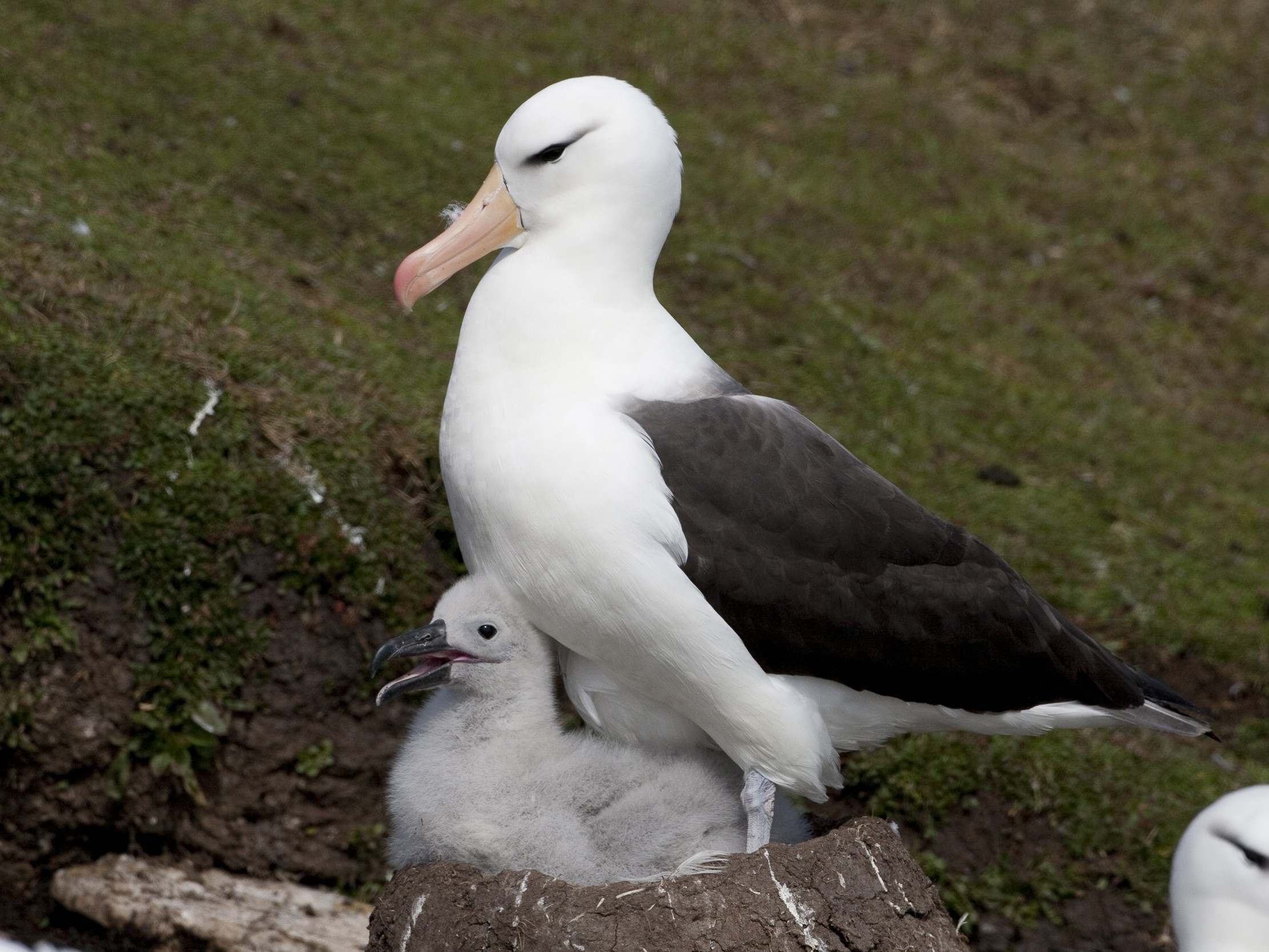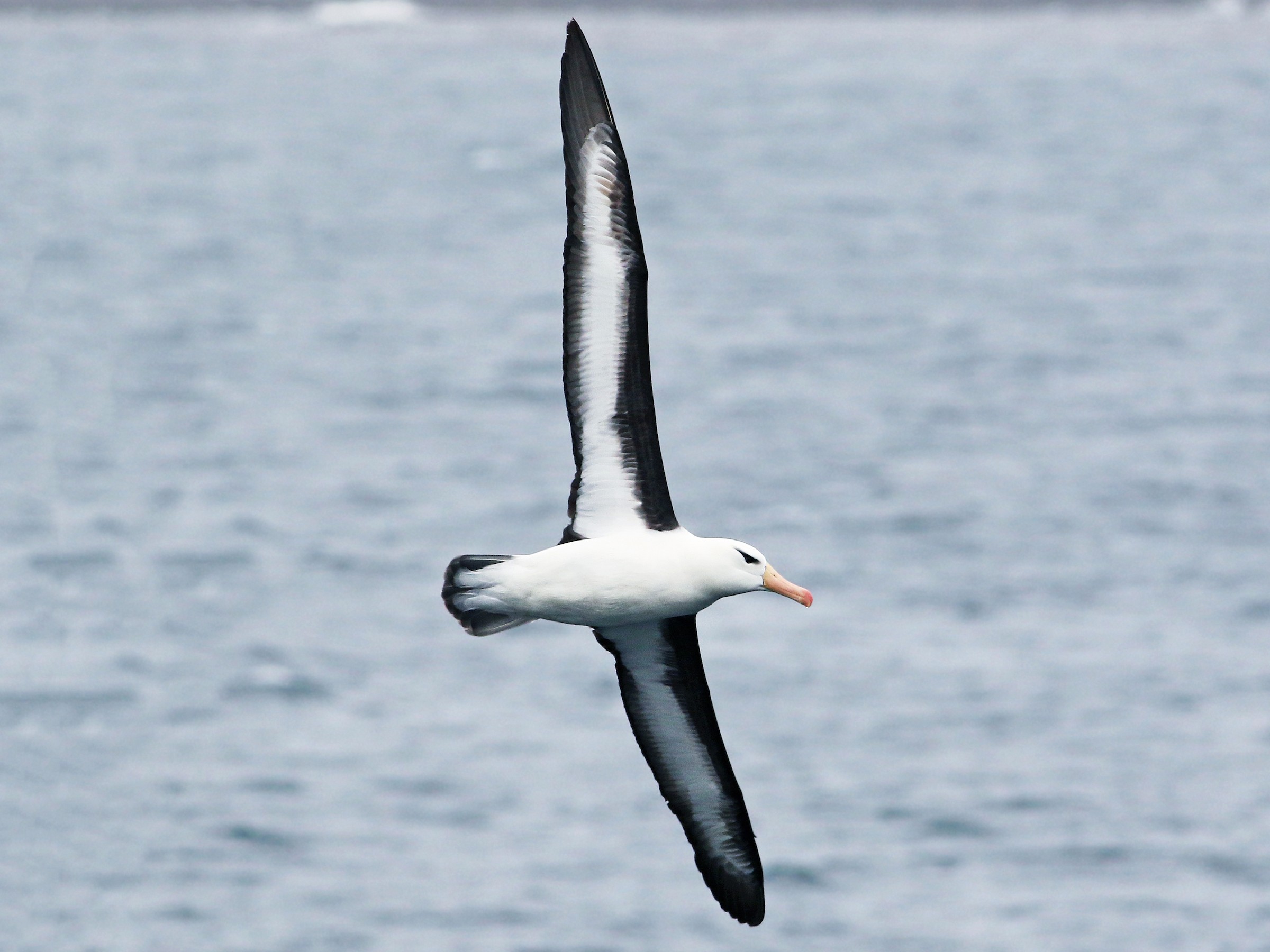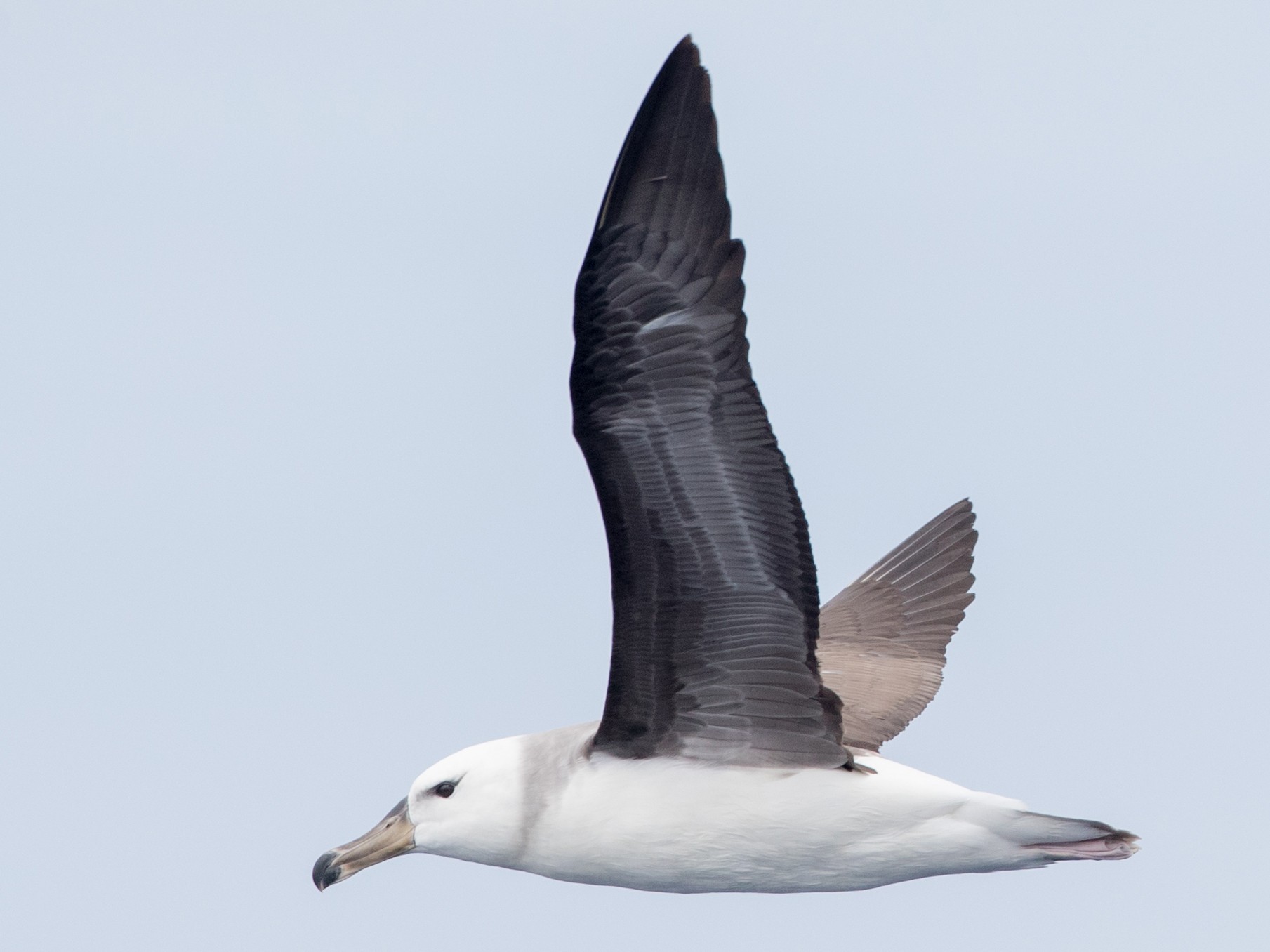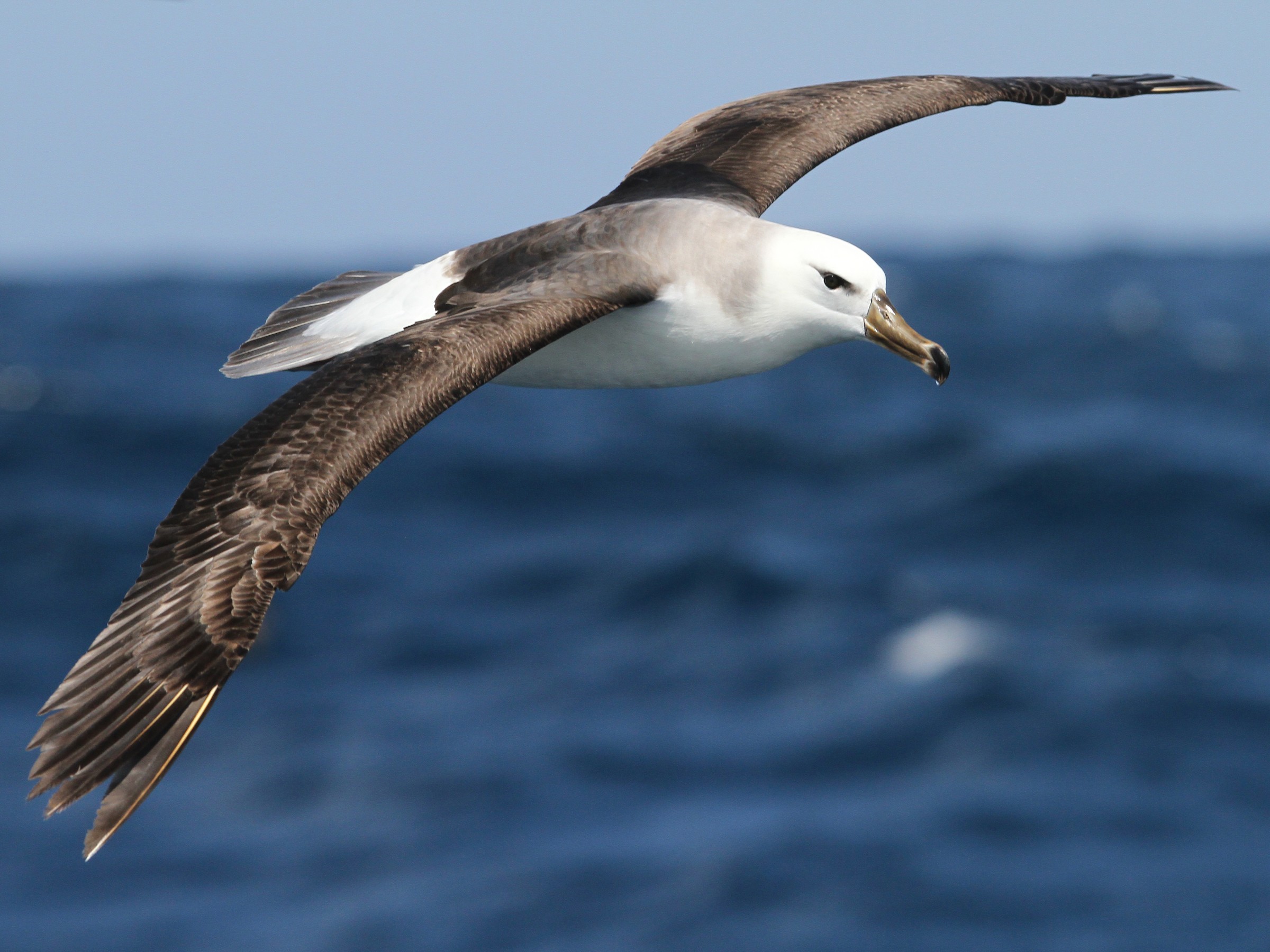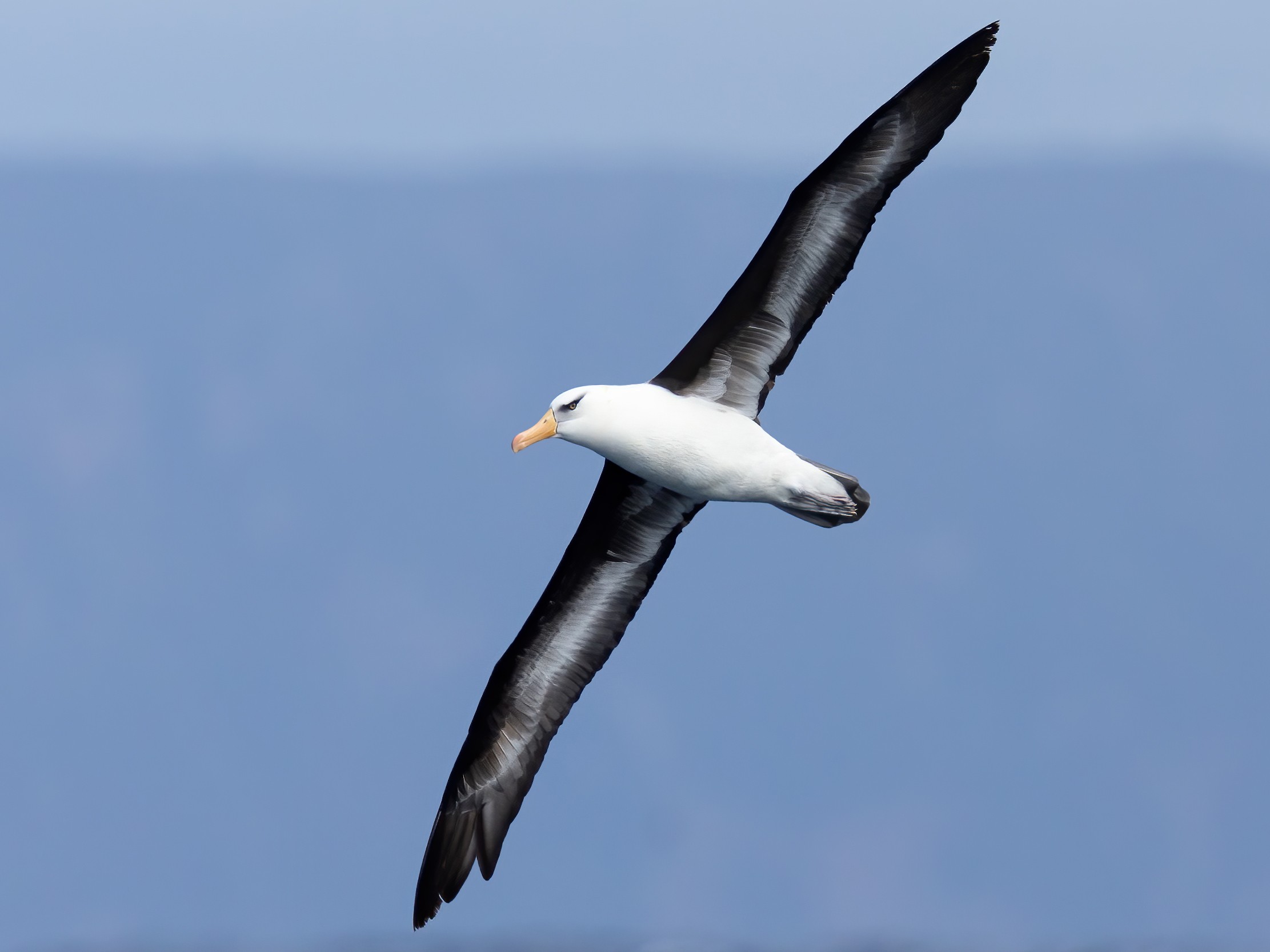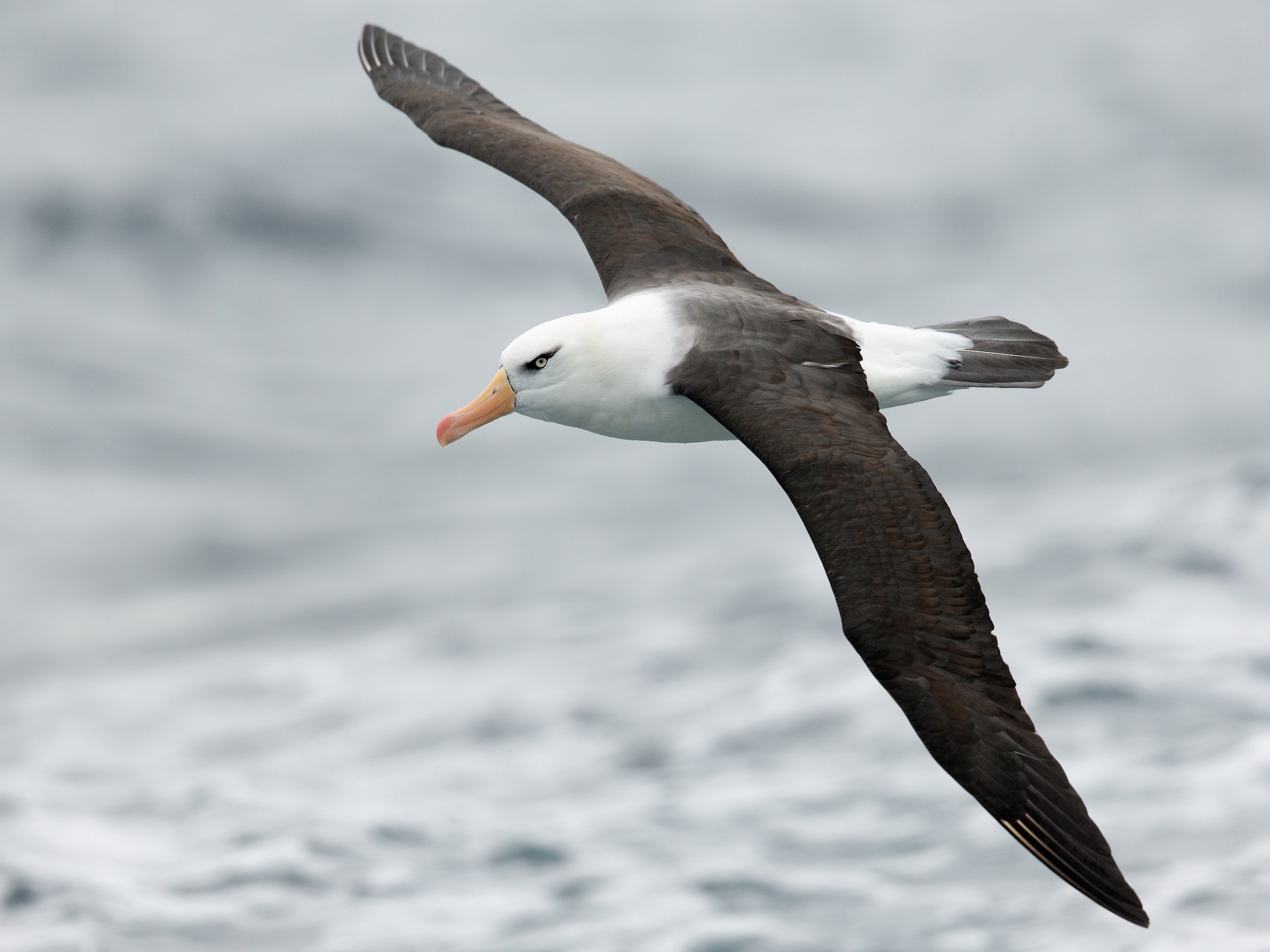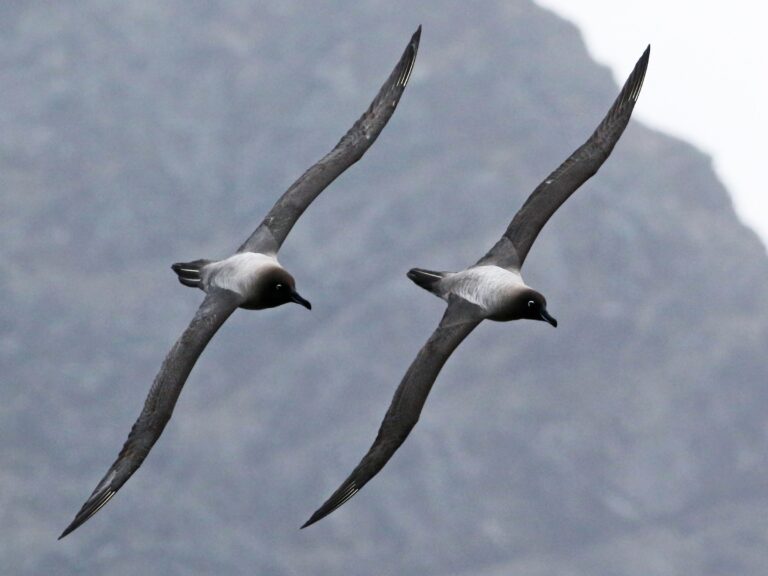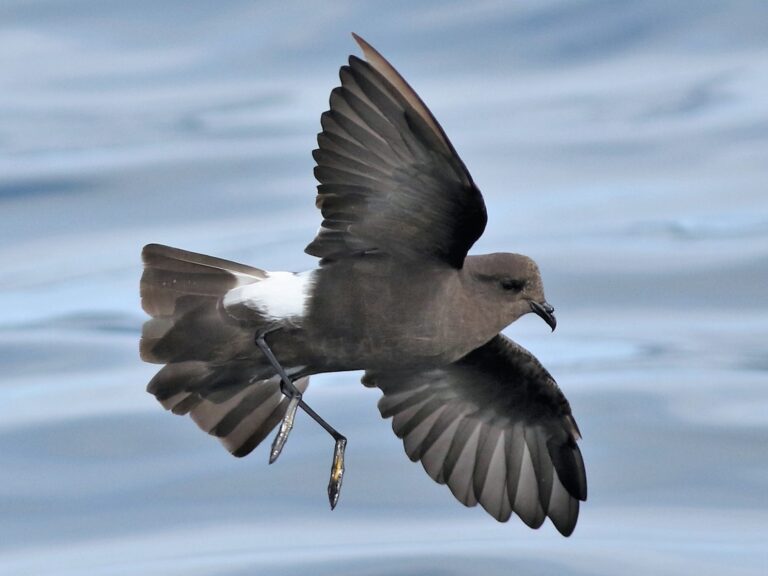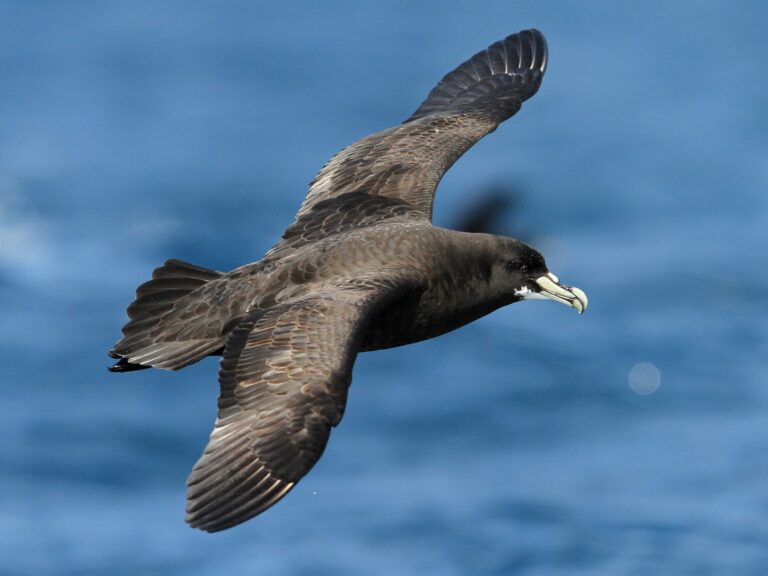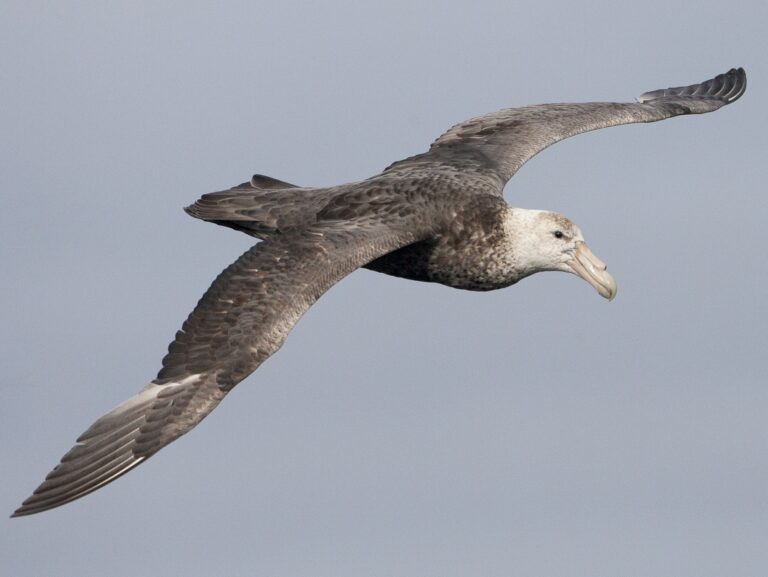Black-browed Albatross: Masters of the Ocean Skies
The Black-browed Albatross is an impressive seabird known for its long wingspan and remarkable flying abilities. This species is not only important to marine ecosystems but also faces challenges due to environmental changes and human activities. Found predominantly in the Southern Ocean, these birds are skilled hunters, often gliding over ocean waves in search of food.
Their striking black-and-white plumage makes them easy to recognize. Behaviorally, the Black-browed Albatross showcases fascinating patterns in parenting and foraging that reveal much about their survival strategies. While their populations have shown resilience, threats from fishing practices and habitat loss pose significant risks.
Understanding the dynamics of the Black-browed Albatross is crucial for their conservation. Awareness of their behaviors, ecological roles, and current conservation status can help efforts to protect these majestic birds for future generations.
Key Takeaways
- The Black-browed Albatross is a key player in marine ecosystems.
- Human activities significantly impact their populations.
- Effective conservation efforts are essential for their survival.
Species Overview
The Black-browed Albatross is a remarkable seabird known for its distinctive features and wide distribution across the Southern Hemisphere. This species plays a vital role in marine ecosystems, and understanding its characteristics is essential.
Physical Description
The Black-browed Albatross, or Thalassarche melanophrys, has a striking appearance. It features a white body with a dark brown to blackish-brown crown and back. The bird’s wingspan can reach up to 2.5 meters (8.2 feet), making it one of the larger albatross species. Its most recognizable feature is the black line across its eye, which gives it the name “black-browed.”
This albatross also has a strong, hooked bill that aids in catching prey. Adults typically weigh between 2.5 to 4.5 kilograms (5.5 to 10 pounds). The coloration of the feathers may vary slightly between individuals, especially in younger birds, which have more mottled plumage.
Taxonomy and Nomenclature
The Black-browed Albatross belongs to the family Diomedeidae, which encompasses all albatrosses and some related species. Within the genus Thalassarche, this species is classified along with similar albatrosses. The specific name melanophrys translates to “black brow,” highlighting its distinctive facial marking.
Taxonomically, the Black-browed Albatross is further divided into two subspecies: the nominate subspecies found in the Atlantic and Indian Oceans and another population primarily located in the South Pacific. Understanding its taxonomy provides insight into its evolutionary relationships with other seabirds.
Habitat and Distribution
The Black-browed Albatross primarily inhabits the Southern Ocean. It can be found breeding on remote islands, such as Bird Island near South Georgia and the Falkland Islands. These locations are crucial as they offer safe nesting sites and abundant food sources.
During the non-breeding season, it ranges widely across the Indian, Atlantic, and Pacific Oceans. These birds often follow fishing vessels, utilizing the activity to find easy meals. Their distribution reflects their adaptability, making them a common sight in various marine environments across the Southern Hemisphere.
Behavior and Ecology
Black-browed Albatrosses exhibit unique behaviors and ecological adaptations that are crucial for their survival. Their feeding habits, reproductive behavior, and migratory patterns play significant roles in their life cycles.
Feeding Habits
Black-browed Albatrosses are skilled foragers, primarily relying on a diet of fish, krill, and carrion. They hunt in pelagic waters, often following fishing boats to scavenge on discarded bycatch. Their feeding strategy includes a combination of surface feeding and diving.
These birds use their keen eyesight to spot prey from afar. They are known to engage in long foraging trips, sometimes flying hundreds of kilometers in search of food. This adaptability allows them to take advantage of various marine resources.
Reproductive Behavior
Breeding pairs of Black-browed Albatrosses are known for their strong pair bonds, often engaging in elaborate courtship rituals. These rituals involve synchronized flying and vocal displays, which help reinforce their bond.
The breeding season generally occurs from late September to late December. After mating, females lay a single egg, which both parents incubate for about 11 to 13 weeks. Once the chick hatches, both parents are involved in feeding and caring for it until it fledges, usually around 3 to 4 months later.
Migratory Patterns
Black-browed Albatrosses are highly migratory, traveling vast distances across the Southern Ocean. They may travel thousands of kilometers between breeding sites and feeding areas.
During the non-breeding season, they move to feed in nutrient-rich waters where prey is abundant. Their migratory routes are influenced by changes in oceanic conditions and the availability of food resources. This ability to cover extensive areas enhances their survival chances while seeking optimal feeding grounds.
Conservation Status
The Black-browed Albatross faces significant challenges that threaten its population and conservation status. Understanding these threats is crucial for developing effective protection efforts.
Threats to Survival
The primary threats to the Black-browed Albatross include bycatch from fishing vessels and habitat degradation. Bycatch occurs when these birds become accidentally caught in fishing gear, leading to injury or death. According to the IUCN, the population has significantly declined due to extensive fishing operations targeting other marine species.
In addition to bycatch, climate change affects their foraging habits and breeding success. Changes in ocean temperatures and currents may alter the availability of their food sources, further endangering their survival. As these threats compound, the conservation status of the Black-browed Albatross remains serious.
Protection Efforts
Conservation efforts for the Black-browed Albatross focus on reducing bycatch and protecting breeding sites. Many organizations are working to implement better fishing practices, such as using bird-scaring devices on fishing vessels. This helps to lower the chance of accidental harm to the birds.
Various protected areas have been established to safeguard critical breeding habitats. Governments and non-profits collaborate on monitoring populations and enforcing regulations. These efforts aim to stabilize and eventually recover the population of the Black-browed Albatross, ensuring its survival for future generations.
Interaction with Humans
The relationship between black-browed albatrosses and humans is complex. It mainly involves concerns about fisheries and the impact of human activities on their populations. Observations and studies also play a critical role in understanding this interaction.
Fishery Relations
Black-browed albatrosses often interact with commercial fisheries, particularly in the Southern Oceans. They frequently scavenge fishery discards and offal, which provide a vital food source. Areas near the Falkland Islands, South Georgia, and Kerguelen Islands serve as important foraging grounds.
However, this reliance on fisheries can pose risks. Bycatch in longline fishing poses a significant threat to their population. Predators such as skuas can further challenge their nesting success, particularly in colonies found on islands like Bird Island and Campbell Island. Understanding these dynamics is essential for conservation efforts.
Observation and Study
Ongoing research is crucial for understanding black-browed albatross populations. Studies focus on their breeding habits, foraging behavior, and interactions with human activities. Researchers conduct observations across key sites, including the Falkland Islands, Diego de Almagro, and Isla Evangelistas.
Data collection includes monitoring population sizes and breeding success rates. This information helps assess how human activities affect their wetlands and food sources. By utilizing tracking technology, scientists can better understand their movements and habitat use, which is vital for effective conservation strategies.
Geographical Variations
Black-browed Albatrosses, known scientifically as Thalassarche melanophris, exhibit distinct geographical variations that affect their subspecies and range. These albatrosses breed across various temperate regions in the Southern Oceans, with notable populations found on several islands.
Subspecies and Range
The Black-browed Albatross can be divided into several subspecies, primarily distinguished by their breeding locations.
- Circumpolar Distribution: These birds are often found in a circumpolar range, which includes breeding spots like the Falkland Islands and the South Georgia Islands.
- Related Species: Close relatives, like the *Campbell Albatross (Thalassarche impavida), inhabit areas such as Campbell Island and Macquarie Island.
Other notable breeding locations include the Antipodes Islands, Kerguelen Islands, Snares Islands, Crozet Islands, and Heard Island. Each habitat provides unique environmental conditions that influence the birds’ behavior and biology.
These geographical variations play a crucial role in understanding conservation needs and the species’ adaptability across diverse ecosystems.
Frequently Asked Questions
This section answers common questions about the black-browed albatross. It covers their wingspan, habitat, diet, vocalizations, predators, and some intriguing facts that highlight their unique nature.
What is the typical wingspan of a black-browed albatross?
The black-browed albatross has a wingspan ranging from about 2.2 to 2.5 meters (7.2 to 8.2 feet). This large wingspan allows them to glide efficiently over the ocean.
Where do black-browed albatrosses primarily live and breed?
Black-browed albatrosses primarily live in the Southern Ocean. They breed on sub-Antarctic islands, such as Bird Island in South Georgia and the Falkland Islands.
How does the black-browed albatross’s diet primarily consist?
The diet of the black-browed albatross mainly consists of fish, squid, and crustaceans. They are skilled foragers and can cover vast distances to find food.
What distinguishes the call of the black-browed albatross from other species?
The call of the black-browed albatross is a mix of low, harsh sounds and clattering noises. This vocalization is unique when compared to other seabirds.
What are the main predators that black-browed albatrosses must be vigilant of?
Main predators of black-browed albatrosses include skuas and rats, which can prey on their eggs and young chicks. These threats necessitate vigilance from adult albatrosses during breeding season.
Can you share some interesting and lesser-known facts about black-browed albatrosses?
Black-browed albatrosses are known for their long lifespan, often living up to 50 years or more. They have excellent navigation skills, allowing them to travel thousands of kilometers in search of food and return to their breeding sites.
